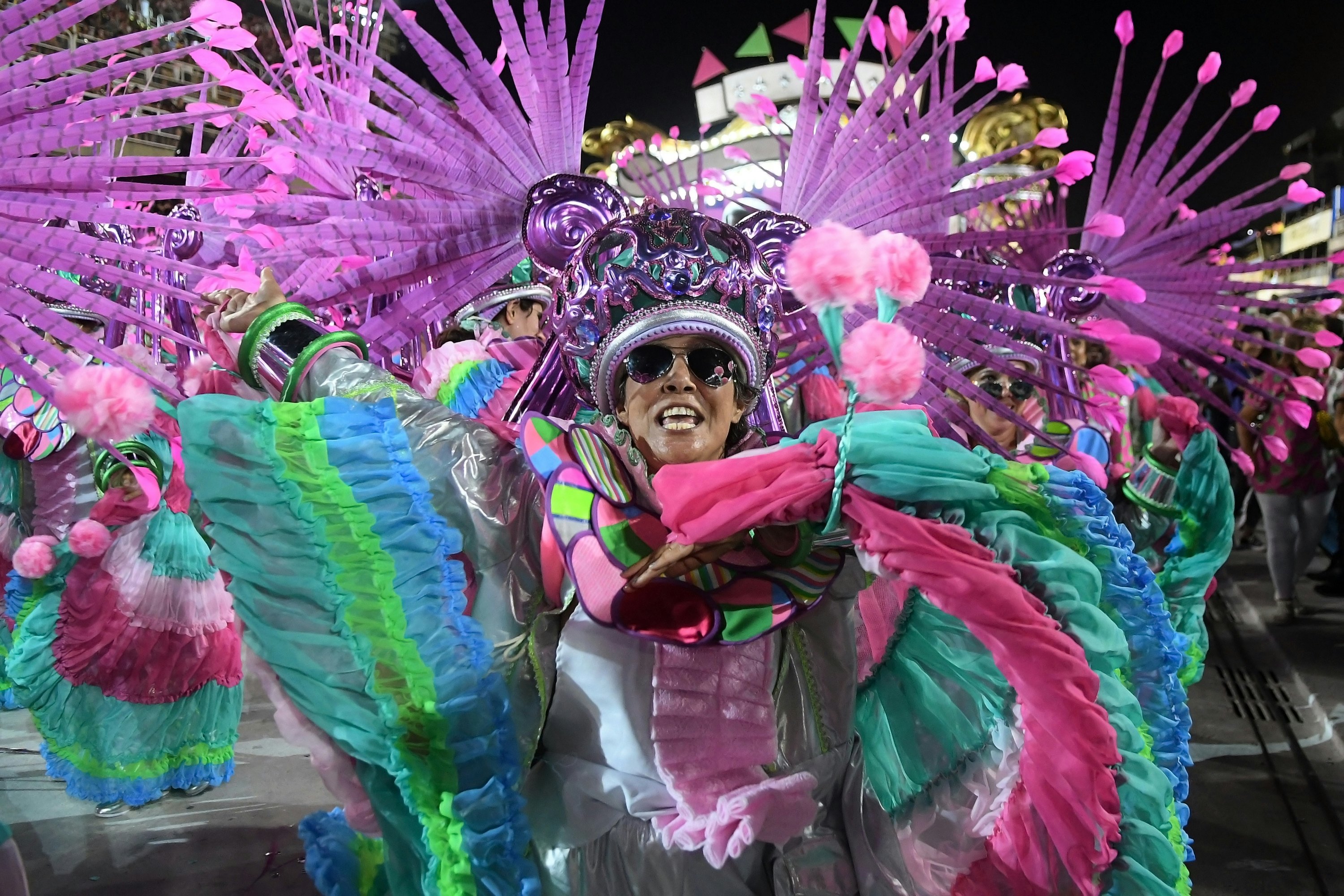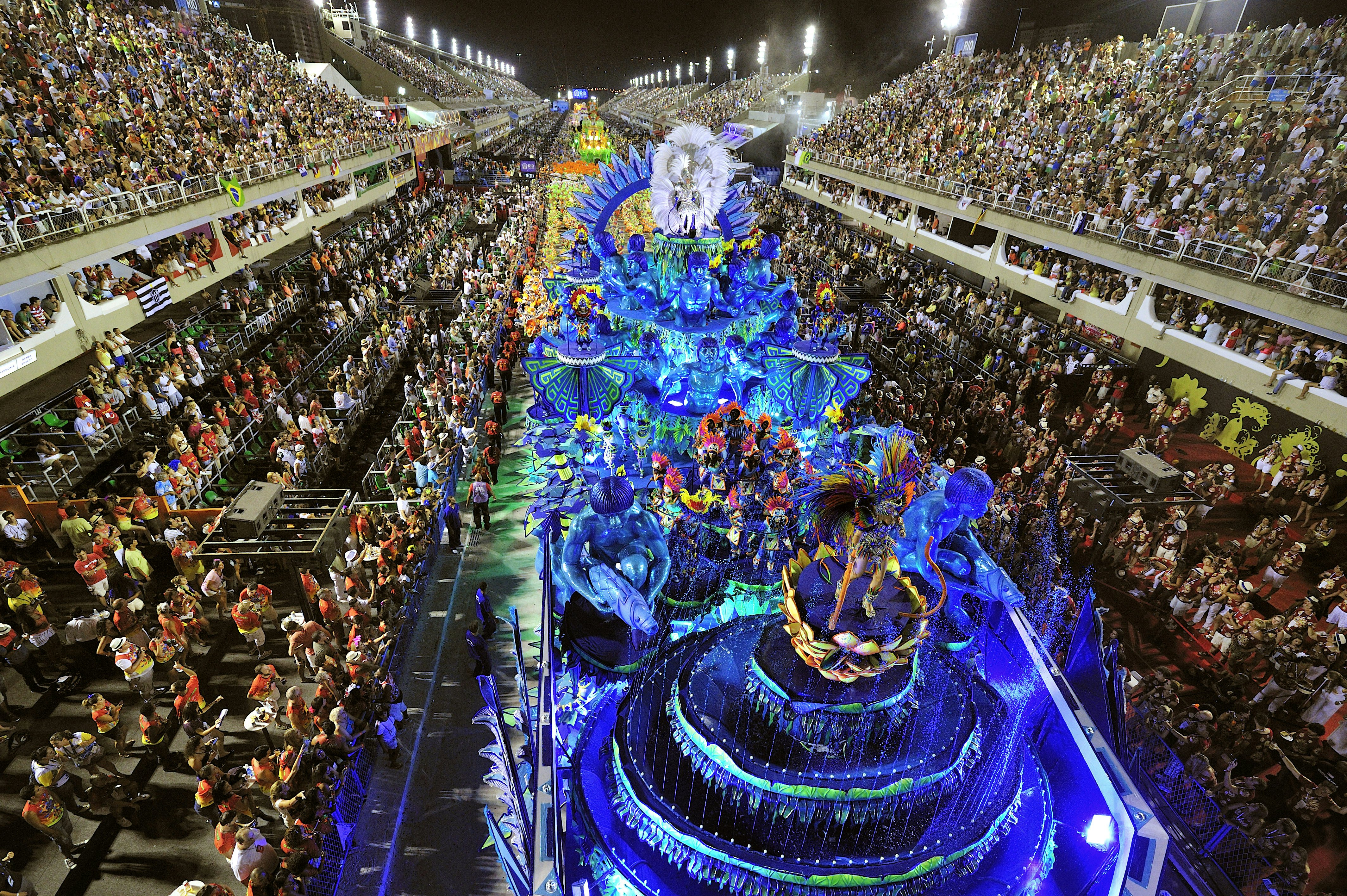

Carnaval in Rio de Janeiro. Celso Pupo/Shutterstock
Picture Rio de Janeiro and you probably conjure up the costumes, colors and cacophony of Carnaval. Brazil’s emblematic celebration is famous for a reason, thanks to dozens and dozens of street parties, jam-packed extravaganzas in the Sambódromo (a stadium built specifically for the event) and millions of spectators from around the world.
Carnaval in Rio also means high prices, high expectations and many unknowns to navigate – from how to get tickets to how to stay safe. Here’s what you need to know to survive and thrive during the greatest party on earth.

What is Carnaval?
Countries around the world celebrate Carnaval (pronounced "car-knee-vow"), which also goes by Carnival, Carnevale and Mardi Gras, among other monikers depending on where you are. Some celebrations retain the Catholic roots of the festival, while others – looking at you Rio – have improvised their way to pure debauchery. One of the official Carnaval rules in Rio is “The exposure of genitals, even if painted, is prohibited.”
The main events of Carnaval in Rio take place in the Sambadrome Marquês de Sapucaí, which everyone simply calls the Sambadrome or Sambódromo in Portuguese. Designed by Brazilian architect Oscar Niemeyer, this open-air venue has concrete bleachers and boxed seating on each side of its 700m (2296ft) paved central alley – like a drag strip but for Carnaval parades.
Here, 12 samba schools from different areas of the city compete for top honors in front of a panel of judges and tens of thousands of live spectators – plus the enormous audience that watches on TV – during parades that form the flashy backbone of Carnaval in Rio.
Each year, the competing samba schools are required to come up with a new theme, along with a new song, costumes and choreography to go along with it. Hundreds or even thousands of performers practice year-round to prepare. The schools must include specific elements and complete their passage through the Sambódromo within 75 to 85 minutes as judges scrutinize every aspect of their presentation.
In 2025, the group that administers Carnaval in Rio announced the first significant changes to the program in many years, including the expansion of first-round parade days from two days, with six samba schools parading each day, to three days, with four samba schools parading each day.
When is Carnaval in Rio?
Cariocas (residents of Rio) say the new year begins after Carnaval. They also say Carnaval begins on February 1, when Sambódromo rehearsals and block parties start rolling out.
Technically speaking, Carnaval spans the nine days that culminate with the onset of Lent, the lead-up to Easter. The exact Carnaval dates change each year because the date of Easter changes. In 2025, the official Carnaval dates were February 28 through March 8. For 2026, the dates are February 13 through February 21.

How many days do I need for Carnaval in Rio?
Official Carnaval dates cover nine days, but it’s possible to stay in Rio longer or shorter than that depending on your appetite for partying.
If you want to immerse yourself in all things Carnaval, it may be worth getting to Rio the weekend before Carnaval officially begins. This will allow you to attend the final weekend of technical rehearsals at the Sambódromo.
Rehearsals happen every weekend in the six weeks leading up to Carnaval. They’re free to attend and provide a behind-the-scenes look at the party atmosphere. Many cariocas can’t afford Sambódromo tickets during the real competition, so they attend these free rehearsals instead, and the stands are filled with fans who come out in support of their specific school.
The technical rehearsals give a taste of what’s to come (minus the full floats and costumes, which stay under wraps until the real competition) and demonstrate how invested the fans are – most can (and do) sing their samba school’s song of the year word for word.

Do I need tickets to see Carnaval in Rio?
Everyone needs a ticket to enter the Sambódromo during the official events. Most of its 13 sections are general admission. The grandstand at the top level is the cheapest and most popular. Sectors 6 and 9 in the grandstand have assigned spaces instead of general admission. However, this does not mean there are seats. All of the grandstand sections of the Sambódromo are simply concrete bleachers. If you want a seat, more comfort, more space and more privacy, go for the costlier tickets in private boxes and other VIP areas. Even-numbered sections are on one side of the central parade strip, while odd-numbered sections are on the other.
Ticketmaster Brazil begins selling Carnaval tickets around August, and they sell out fast. If you don’t snag a ticket through Ticketmaster, there are numerous online resellers and scalpers at the venue. Some tour companies sell tickets, as well as full Carnaval packages, including Rio Tickets and Rio.com by Bookers.
Tickets are not usually required to attend the street parties associated with Carnaval (more on those below).
What should I bring to the Sambódromo?
Hard-sided coolers, large backpacks, glass and cans are not allowed inside the Sambódromo. However, you can bring in some essentials to make your experience much more comfortable.
Events at the Sambódromo happen at night and continue until sunrise (roughly 8pm to the wee hours), but it’s still gonna be hot. Do like many residents do and buy an oversize fan from a vendor on the street. Learn to snap it open and closed with attitude – it’ll keep you feeling cooler and looking cooler.
Some other items to consider bringing to the Sambódromo:
A soft-sided insulated bag and a few small frozen water bottles to keep drinks cold
Toilet paper
Something to sit on (the concrete bleachers are hard)
Snacks
A cozy to keep drinks colder longer
Ear plugs (if you are sensitive to prolonged loud music)
If you don’t want to bring drinks or snacks with you into the Sambódromo, vendors sell cold beverages and snacks. However, with 90,000-plus people packed in, it can be hard to get them.

Does everything happen in the Sambódromo?
It’s not all about the Sambódromo. Dozens of street parties, called blocos, happen in neighborhoods across the city starting weeks before Carnaval officially begins and running through the end of Carnaval. These often-free throw-downs usually start in the morning and rage all day, with live bands, dancing, street vendors selling drinks and food, and wall-to-wall people. This handy schedule of blocos for the 2026 Carnaval in Rio lets you search by date and neighborhood.
Where should I stay during Carnaval in Rio?
If you’re coming to Rio for Carnaval, book accommodations as far in advance as possible. Hundreds of thousands of people show up for this party, which means hotels and short-term rentals fill up fast. Expect elevated prices as well.
Many foreign visitors choose to stay in Copacabana, Leme or Ipanema, because these areas in the city’s southern zone have the most tourist infrastructure and the highest degree of security, plus close proximity to the ocean.
Wherever you stay, remember that Carnaval in Rio happens during one of the hottest and most humid times of year. Be sure your accommodation has air-conditioning. Blackout curtains are also a good idea, since you may be catching at least some of your z's after sunrise.
How can I get around during Carnaval in Rio?
Ride-sharing services like Uber and yellow taxis are plentiful in Rio. However, during Carnaval the sheer number of people on the move and the massive street parties mean that getting around on city streets is often an exercise in frustration.
Luckily, Rio has an extensive public transit system that includes subway lines, buses, trams and the VLP train. You can use your credit card to access the metro subway system. However, if you want to ride a bus or take any VLT transport, you’ll need to pay in cash or buy a Riocard Mais Expresso. This plastic card is available in most metro stations and can be used for the metro, buses, trams and VLT.
Good to know: during Carnaval, the metro system in Rio operates 24-7.

Dressing up for Carnaval in Rio
Everyone dresses up, not only those performing in official samba school parades or at blocos. Follow the cariocas and head to a shopping area in Rio called Uruguaiana, or go to the Mercado do Madeira to find low-cost Carnaval outfits (called fantasias) to wear while you spectate and party in the streets. Some blocos have themes such as the Beatles or Super Mario that may influence your costume choices. You can go over the top or just get something sparkly to wear and you’ll fit in.
How to speak Carnaval
Portuguese is the official language of Brazil. Some Spanish is understood but don’t expect to find much English outside of the main tourist corridors and services.
It’s worth learning a few phrases in Portuguese.
Bom dia (pronounced "bon-jee-ah"): hello
Boa tarde (pronounced "bow-ah-tar-jee"): good afternoon
Boa noite (pronounced "bow-ah-noy-chay"): good evening
Disculpa (pronounced "deesh-cul-pa"): excuse me/pardon me
Obrigado/obrigada (pronounced "oh-bree-ga-doe/oh-bree-ga-da"): thank you (masculine/feminine form)
Como vai? (pronounced "ko-moe-vie"): how are you?
Eu nao fala Portuguese (pronounced "ay-you-nau-fala-Portuguese"): I don’t speak Portuguese
And here’s a cheat sheet of Carnaval-specific words and terms.
How can I stay healthy during Carnaval in Rio?
Carnaval happens during one of the hottest and most humid periods in Rio, so stay hydrated – though do not drink the tap water – and don’t forget to wear sunscreen, a hat and sunglasses.
Also: pace yourself. Cariocas are steeped in the frenzy of Carnaval and well trained for the all-day, all-night partying. You may not be quite as fun-fit. Don’t try to do it all, and don’t forget to get some sleep and some decent food every once in a while.
How can I stay safe during Carnaval in Rio?
Pickpockets are skilled in Rio, so carry only what’s necessary. Keep valuables in money belts or other extremely secure ways on your person (not in front or back pockets). Credit cards are accepted almost everywhere in Rio, including by street vendors, so carry just a bit of cash.
Do not wear or carry anything ostentatious – that includes jewelry and cameras. And don’t walk around with your cellphone in your hand. If you need to use your phone on the street in Rio, step back from the curb and away from the flow of traffic or, preferably, go inside a shop. Cellphone snatching is common in Rio.














